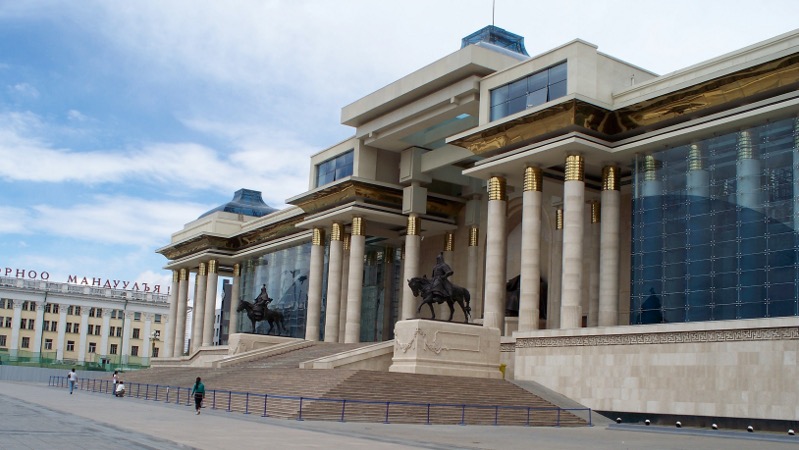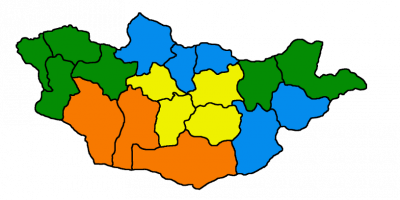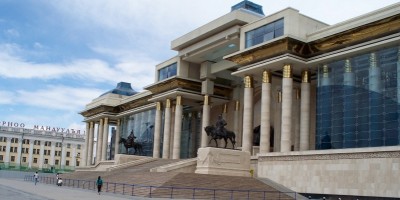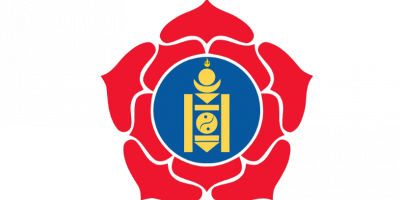Each year since 2007 the Anti-Corruption Agency (Авлигатай тэмцэх газар) has required members of parliament (MP), government ministers, and high ranking bureaucrats to report their personal income and assets. The compiled data from these reports is available on the Anti-Corruption Agency website.1
In the spring when the data for 2011 was first published, many local newspapers carried stories about the data, but for the most part the news stories just focused on individuals and their reports. I thought it might be interesting to look at parliament as a body from the perspective of its members’ reported wealth. This is the first of three posts from this data.
I compiled data from the 2008 to 2011 reports, and started by calculating every member of parliament’s “net worth.” The reports ask about a variety of financial items including individual and family income, automobiles, property, stocks, and outstanding loans. I used a rather simple formula for net worth by adding all reported annual income and assets and subtracting out any reported debts. I then ranked each member by placing them in their respective wealth percentiles with 0 the poorest and 100 the wealthiest on the scale. Figure 1 shows these rankings plotted against the absolute total net worth of each member. The most striking aspect of this graph is how much it seems to mirror Mongolia’s growing income inequality. About 80% of MPs appear down right poor in comparison to the top 20 percentile. In 2011 the highest reported net worth was just over 35 billion MNT (26 million USD) compared to the lowest at minus 102 million MNT (-75 thousand USD). There is definitely a huge disparity in the wealth of MPs, but the perception of poverty has a lot more to do with the scales of the graph’s axes than anything else.
 Figure 2 shows the bottom 50% from 2008-2011 brought into clearer perspective. With the exception of one MP in 2011 and 2010, all MPs have positive net worths in all four report years, and 90 percent of all MPs have a reported net worth of 100 million MNT (74 thousand USD) or more. In a country with an estimated GDP per capita of $4,8002, this suggests even the poorest MPs are still doing pretty good financially. Figure 3 shows net worths for the 50-90 percentiles, and Figure 4 the top ten percent in parliament, which is dominated by multi-billionaires in MNT (or multi-millionaires in USD).
Figure 2 shows the bottom 50% from 2008-2011 brought into clearer perspective. With the exception of one MP in 2011 and 2010, all MPs have positive net worths in all four report years, and 90 percent of all MPs have a reported net worth of 100 million MNT (74 thousand USD) or more. In a country with an estimated GDP per capita of $4,8002, this suggests even the poorest MPs are still doing pretty good financially. Figure 3 shows net worths for the 50-90 percentiles, and Figure 4 the top ten percent in parliament, which is dominated by multi-billionaires in MNT (or multi-millionaires in USD).


 These graphs do show the wide variance in wealth among parliamentarians. Just like the wider economy, some MPs appear to be not only succeeding financially but succeeding extraordinarily well. These graphs do obscure the fact that for some parliamentarians their net worth is disproportionately vested in assets (property, automobiles, stocks, and animals) and not in reported income. More on this in the next post.
These graphs do show the wide variance in wealth among parliamentarians. Just like the wider economy, some MPs appear to be not only succeeding financially but succeeding extraordinarily well. These graphs do obscure the fact that for some parliamentarians their net worth is disproportionately vested in assets (property, automobiles, stocks, and animals) and not in reported income. More on this in the next post.
A final word on the way the data is presented. These rankings are presented blind to particular individuals. So, one year MP Y might have a reported net worth that puts him in the bottom 25 percentile and another year that puts him in the 40 percentile without anyway to see this change from the graphs themselves. It is possible to “reverse engineer” the calculations and figure out who is who, but my aim here is not to examine the wealth of individuals but rather parliament as a body from year to year. This is also voluntarily reported data from the MPs themselves. This in some ways validates not looking at individuals, because the data is prone to so many kinds of errors.
Footnotes
1. Anti-Corruption Agency (Авлигатай тэмцэх газар) – http://www.iaac.mn
2. CIA Word Factbook – https://www.cia.gov/library/publications/the-world-factbook/geos/mg.html



